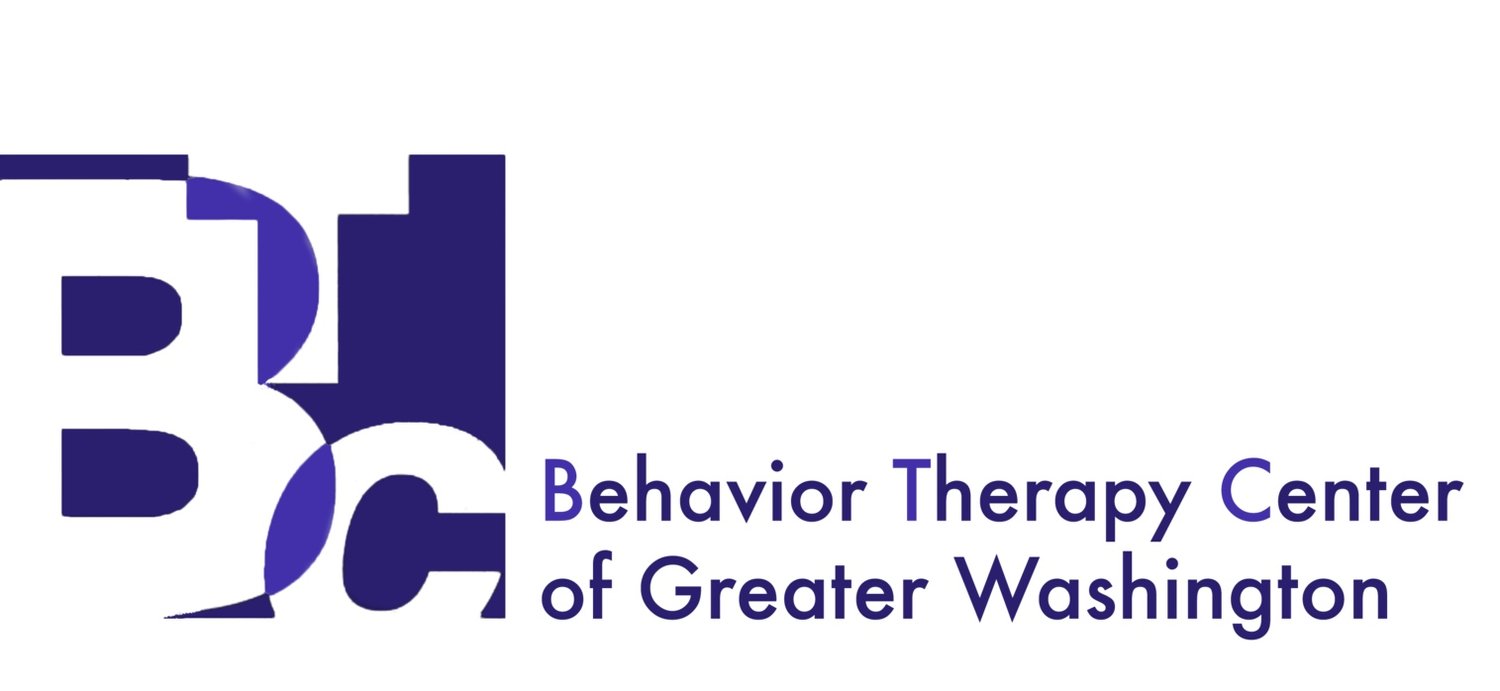Will I get better? Maximizing the Chances of Successful Cognitive-Behavioral Treatment, by David J. Keuler, Ph.D. (BTC Staff Psychologist, Assistant Director)
/From the first call to set up an appointment at The Behavior Therapy Center of Greater Washington, our patients express some measure of hope that they will benefit from cognitive-behavioral psychotherapy (CBT). In fact a substantial majority of patients do report that they make meaningful progress over the course of treatment. Over the years, our most successful patients have taught us how to improve the likelihood that everyone who walks through our doors feel successful in meeting their treatment goals. These “success lessons” have revealed three factors that frequently influence positive treatment outcomes:
1. How patients embrace their therapeutic roles
2. How ready patients are for therapeutic change
3. How willing patients are to prioritize treatment
Patients can substantially maximize their chances of successful treatment by examining how each of these factors may affect their own treatment process.
The Critical Distinction between CBT and the Practice of Medicine
One enduring challenge for CBT is that patients frequently equate seeing a psychotherapist to seeing a medical doctor. When going to the doctor, we simply show up, answer a few questions, receive a diagnosis, and leave the office prescription in hand. Beyond taking a trip to a diagnostic center or swallowing medicines in a prescribed manner, most of us do not expect to contribute much more to the success of the treatment. In short, the doctor is in charge of getting us better.
Cognitive-behavioral therapy succeeds on a nearly antithetical principle: the patients work to get themselves better. Therapists act predominantly as teachers and coaches: they team up with their patients, give them the guidance and structure they need to succeed, and send them out into the world with assignments to complete. The brunt of the work necessarily falls on the patients because therapists typically see them for only one hour per week. That’s approximately two days per year if you add up all of the individual session hours! And in two days per year, therapists cannot exert the level of influence necessary to promote successful cognitive and behavioral changes. Accordingly, successful treatment outcomes demand that patients dedicate time outside of therapy sessions to practice their newly acquired skills.
Prior to entering CBT, patients should consider whether they are prepared to dedicate those additional hours. Hectic home and work lives can interfere with between-session CBT assignments and result in poorer treatment outcomes.
Motivation & Readiness for Change
Patients enter psychotherapy with varying degrees of motivation and readiness for change. Some patients find themselves staring suspiciously at a therapist whom they neither called nor considered. Well-meaning parents, friends, or relatives often succeed in pressuring them to “give therapy a try.” But here’s the rub: the active nature of cognitive-behavioral treatment requires patients to surrender old patterns of thinking and behavior. This surrender reflects a patient’s willingness and desire to explore new psychological territory and embrace the therapeutic process fully. Not surprisingly, patients who did not enter treatment fully of their own accord require additional therapeutic support and encouragement. However, their continued perseverance in the therapeutic process can be undermined by the circumstances of their arrival to treatment. Clearly those patients who are charged up and ready to go are more likely to succeed than those who enter the therapy process without a full, up-front commitment.
Being charged up for therapy is great; however, most successful patients never demonstrated a wild enthusiasm for psychotherapy. Enthusiasm certainly helps patients with their motivation for treatment, but it is not a requirement for success. Patients typically approach their initial therapeutic assignments with some measure of skepticism, fear, hopelessness, or faint enthusiasm. The key point is this: success hinges on a patient’s willingness to remain open-minded to the success a particular therapeutic intervention and to engage the process as fully as possible. Even skeptical patients can commit to the process of treatment without buying in completely to the treatment rationale or to the expected treatment effectiveness. This means that success is built around the willingness to dedicate oneself as fully as possible to the work prescribed in and out of sessions. Patients should consider whether they are willing to commit to the CBT process despite any reservations and allow their therapists to carry the hope and vision of a successful treatment outcome when they are unable to do so.
Prioritizing Treatment
CBT requires regularly attended sessions. This may seem obvious, but obligations to work, children, friends, and hobbies regularly compete with therapy. Low motivation for treatment, physical illness, and heavy traffic also deter some patients from making the journey to BTC. CBT succeeds by promoting many cognitive and behavioral changes within a relatively short period of time. Successes promote further successes, and new learning builds rapidly on key experiences. Spotty attendance compromises this learning curve by diluting the number of key experiences that are necessary to shift old patterns of thinking and behavior. Weekly or bi-weekly visits insure that patients are discussing their achievements and problem-solving difficulties at a pace that stands a chance of promoting the successes that we’ve come to expect from the practice of CBT.
In sum, those patients who are willing to work hard, dedicate time in and out of sessions, and show up regularly can dramatically improve their likelihood of success in treatment. Patients should take the time to ask themselves, “Will I be one of those patients?”

